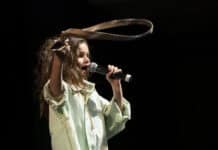The Verde Valley School expects to finalize plans for refurbishing three unfinished campus buildings formerly used by the defunct Camp Soaring Eagle by the end of the year.
VVS Director of Advancement Kathryn Joyce said that each of the buildings will be redesigned for a specific use and designated as the Center for STEM Programs and Research, the Center for Global Languages and the Center for Sustainable Design and Wellness. Design work on the buildings remains ongoing.
The Center for Sustainable Design and Wellness building will incorporate a new food service facility with a commercial kitchen and dining hall and will be used to host future farm-to-table events.
Head of School Ben Lee said that the redevelopment will be the first time in 25 years that VVS will have acquired new classroom space.
“Assuming that we move forward with this particular plan, during times that VVS is not using those buildings, they could be rented out to weddings or conferences, executive retreats,” Lee said. “They would be self-sufficient. We wanted to have food service there so that if we were to rent them to outside groups, they could be confined [to] that side of the campus, while the rest of the school does its own thing on the other side.”
The VVS Board of Trustees previously formed a task force to plan the development of the 90 acres of unused school property, which includes the unfinished buildings and has been renamed the Southwest Ethnobotanical Education Destination. VVS has no current plans to erect additional buildings, and Lee previously estimated that completing renovation of the existing structures will require between $3 and $4 million and two years of work. The task force is also charged with developing a branding and marketing plan for the space and finding profitable uses consistent with the school’s mission.
Lee said that the school will also benefit from a recent bitcoin donation of “just over half a million dollars” from an alumnus that will be dedicated to infrastructure improvements. VVS is exploring bond financing and ways to develop the SEED land to generate non-tuition revenue.
Development of the remaining acreage will require construction of a new fire access road across the campus and completion of an ongoing wastewater study. No completion date has been set for those projects; Lee estimated that VVS will be taking bids and possibly starting construction on the road before the end of the current school year.
“The next step is to design the septic system for those three new buildings,” Lee said. “Those three buildings will need their own system, which will need to be designed and built, and that will be a major undertaking.”
Board of Trustees Chairwoman Tamara Cook said that VVS would not be considering using a portion of the available space for concerts and live music. “There was talk about the amphitheater in the original design but that was … a pipe dream when it was conceived and when there was concern expressed by members of the community, we agreed not to consider that,” Cook said. “Whether that’s reconsidered in 30 years won’t be my problem. But for this round, it’s definitely not considered.”
“There’s a lot of land out there, so there’s a lot of opportunity for us to be creative,” Cook said. “But we’re just biting off the piece that’s sort of the obvious elephant in the room, which is those three buildings, and from there, hopefully it’ll evolve.”
